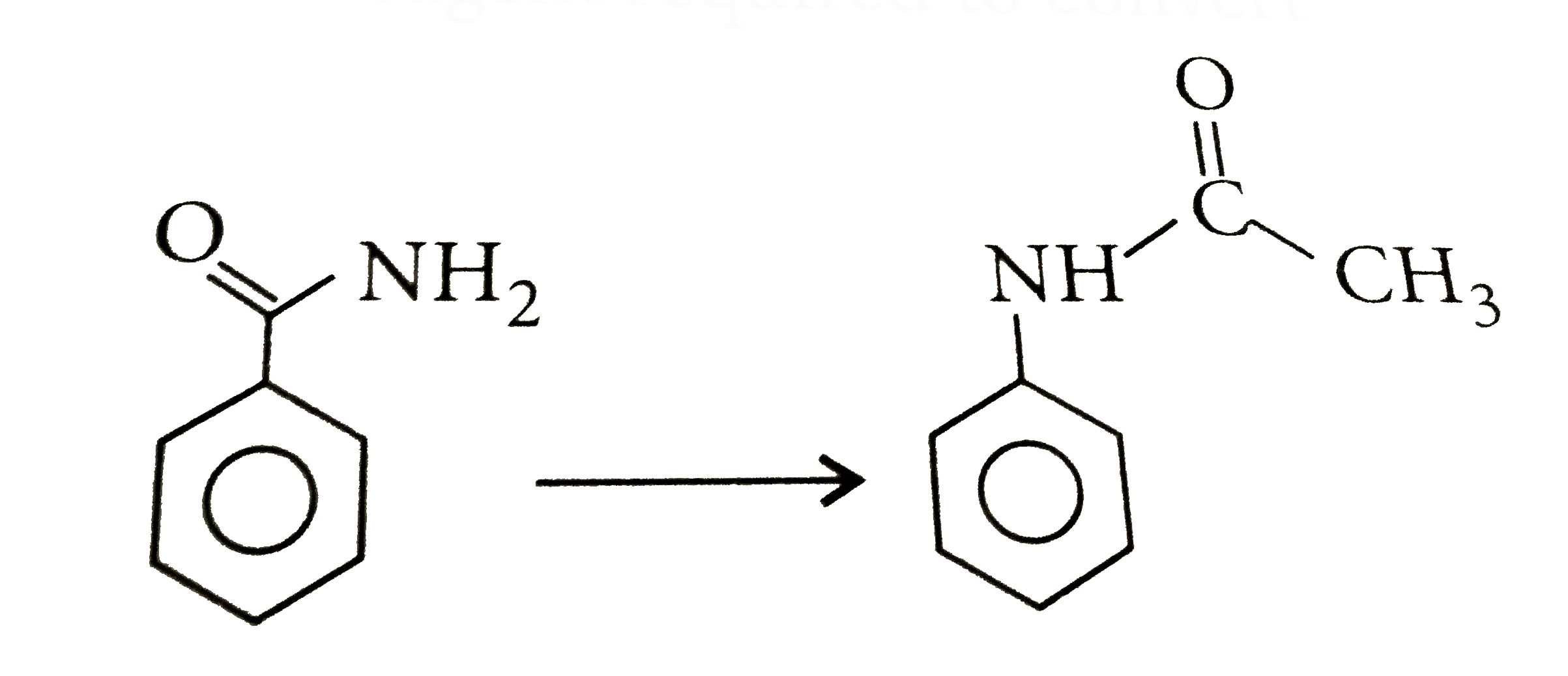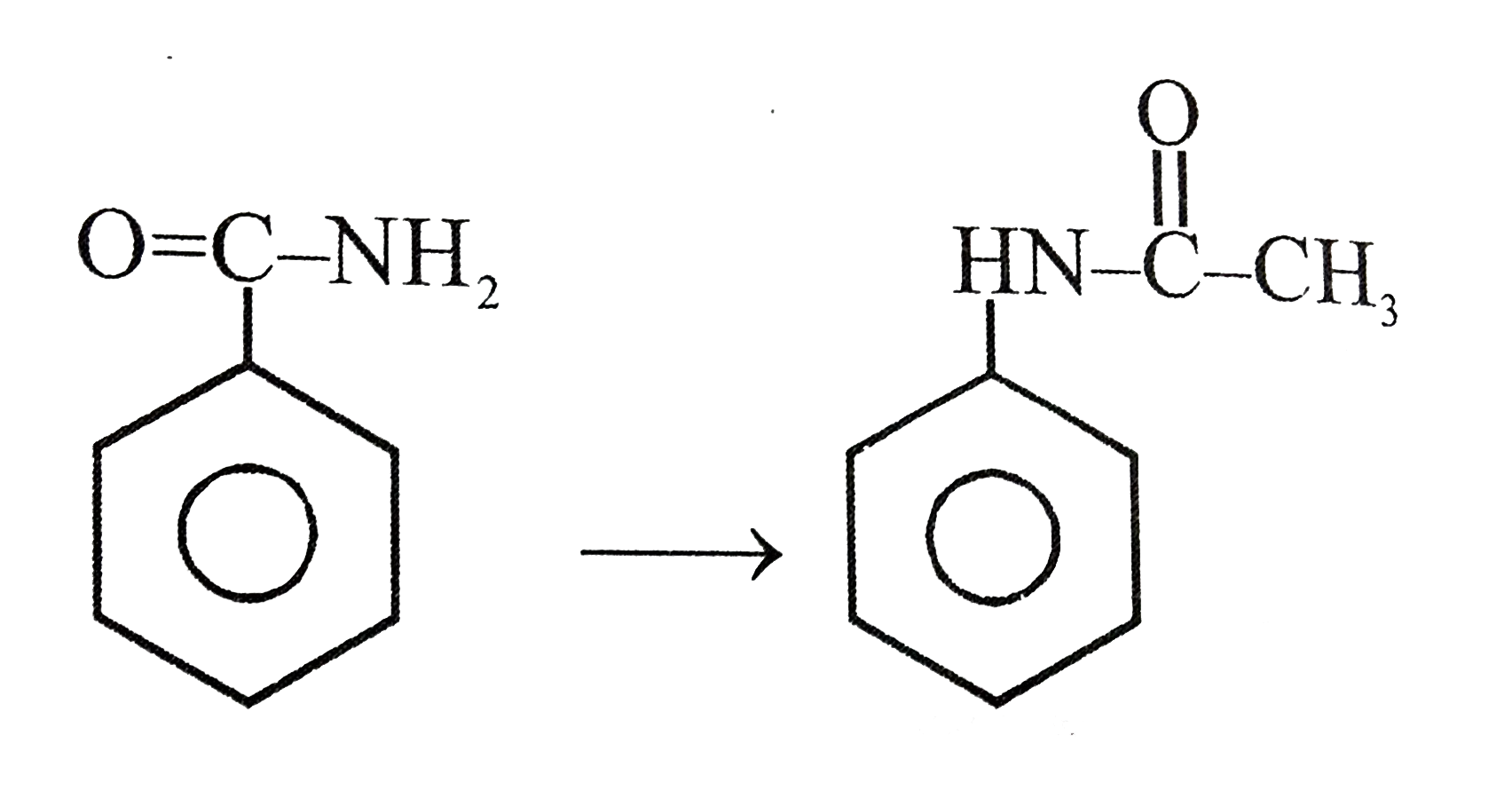The best reagent for converting, 2-phenylpropanamide into 1-phenylethanemine is….
excess H2/Pt
NaOH/Br2
NABH4/methanol
LiAlH4ether
The correct Answer is:B
To convert 2-phenylpropanamide into 1-phenylethanamine, we need to consider the structural changes involved in this transformation. Here’s a step-by-step breakdown of the solution:
Step 1: Identify the structure of 2-phenylpropanamide
2-phenylpropanamide has the following structure:
- It consists of a propanamide backbone (which has three carbons) with a phenyl group attached to the second carbon.
Step 2: Understand the target structure
The target compound, 1-phenylethanamine, has the following structure:
- It consists of an ethanamine backbone (which has two carbons) with a phenyl group attached to the first carbon.
Step 3: Analyze the required transformation
To convert from 2-phenylpropanamide to 1-phenylethanamine, we need to:
- Remove one carbon from the amide structure (the propanamide) and convert the carbonyl group (C=O) into an amine (NH2).
Step 4: Identify the appropriate reagent
The best reagent for this transformation is sodium hydroxide (NaOH) in the presence of bromine (Br2), which is known as the Hofmann bromamide reaction. This reaction specifically removes the carbonyl group and reduces the carbon chain by one carbon atom.
Step 5: Conclusion
Thus, the best reagent for converting 2-phenylpropanamide into 1-phenylethanamine is NaOH in Br2.
Summary of the Steps:
1. Identify the structure of the starting compound (2-phenylpropanamide).
2. Determine the structure of the desired product (1-phenylethanamine).
3. Analyze the transformation needed (removal of one carbon and conversion of carbonyl to amine).
4. Identify the appropriate reagent (NaOH in Br2 for Hofmann bromamide reaction).
5. Conclude with the answer.
---
2-phenylpropanamide has the following structure:
- It consists of a propanamide backbone (which has three carbons) with a phenyl group attached to the second carbon.
The target compound, 1-phenylethanamine, has the following structure:
- It consists of an ethanamine backbone (which has two carbons) with a phenyl group attached to the first carbon.
To convert from 2-phenylpropanamide to 1-phenylethanamine, we need to:
- Remove one carbon from the amide structure (the propanamide) and convert the carbonyl group (C=O) into an amine (NH2).
The best reagent for this transformation is sodium hydroxide (NaOH) in the presence of bromine (Br2), which is known as the Hofmann bromamide reaction. This reaction specifically removes the carbonyl group and reduces the carbon chain by one carbon atom.
Thus, the best reagent for converting 2-phenylpropanamide into 1-phenylethanamine is NaOH in Br2.
1. Identify the structure of the starting compound (2-phenylpropanamide).
2. Determine the structure of the desired product (1-phenylethanamine).
3. Analyze the transformation needed (removal of one carbon and conversion of carbonyl to amine).
4. Identify the appropriate reagent (NaOH in Br2 for Hofmann bromamide reaction).
5. Conclude with the answer.
Topper's Solved these Questions
- AMINESBOOK - NCERT EXEMPLAR ENGLISHCHAPTER - AMINESEXERCISE - SATQ
37 Videos
- AMINESBOOK - NCERT EXEMPLAR ENGLISHCHAPTER - AMINESEXERCISE - LONG ANSWER
3 Videos
- ALDEHYDE, KETONES AND CARBOXYLIC ACIDSBOOK - NCERT EXEMPLAR ENGLISHCHAPTER - ALDEHYDE, KETONES AND CARBOXYLIC ACIDSEXERCISE - Long Answer Type Questions
4 Videos
- BIOMOLECULES BOOK - NCERT EXEMPLAR ENGLISHCHAPTER - BIOMOLECULES EXERCISE - Long Answer Type Questions
5 Videos
Similar Questions
Knowledge Check
The best reagent to convert pent-3-en-2-ol into pent-3-en-2-one is
Aacidic permanganateBacidic dichromateCchromic anhydride in glacial acetic acidDpyridinium chlorochromate.
The reagents used to convert

View SolutionThe reagent needed for converting
 is :
is :
View SolutionThe reagent required to convert

View SolutionThe reagents needed to convert :

View SolutionThe best reagent for converting an alcohol into the corrosponding chloride is
View SolutionWhich of the following is a true nut?
View SolutionWhich of the following is the best reagent to convert 1-Methylcyclohexene into 2-methylcyclohexanol ?
View Solution
